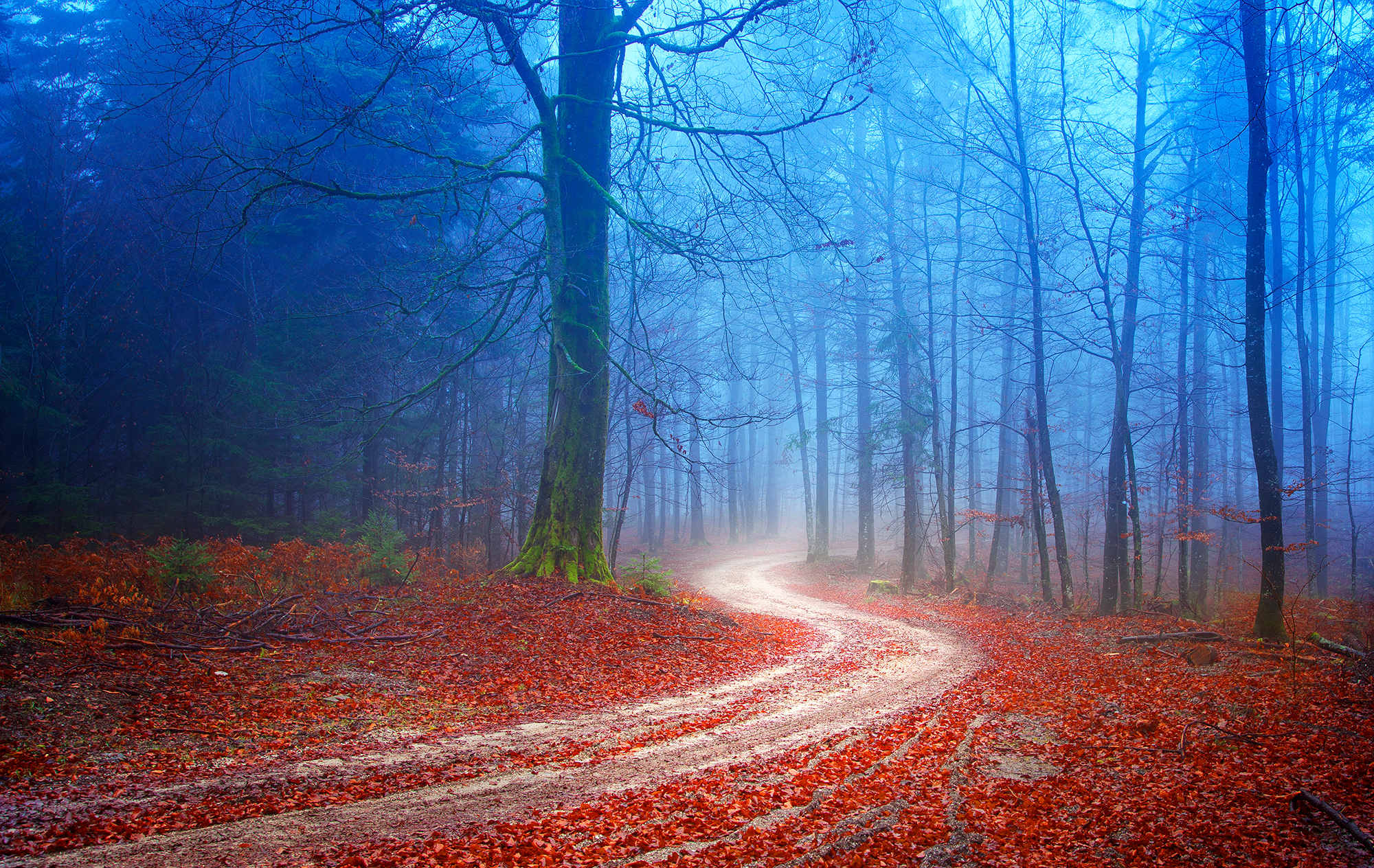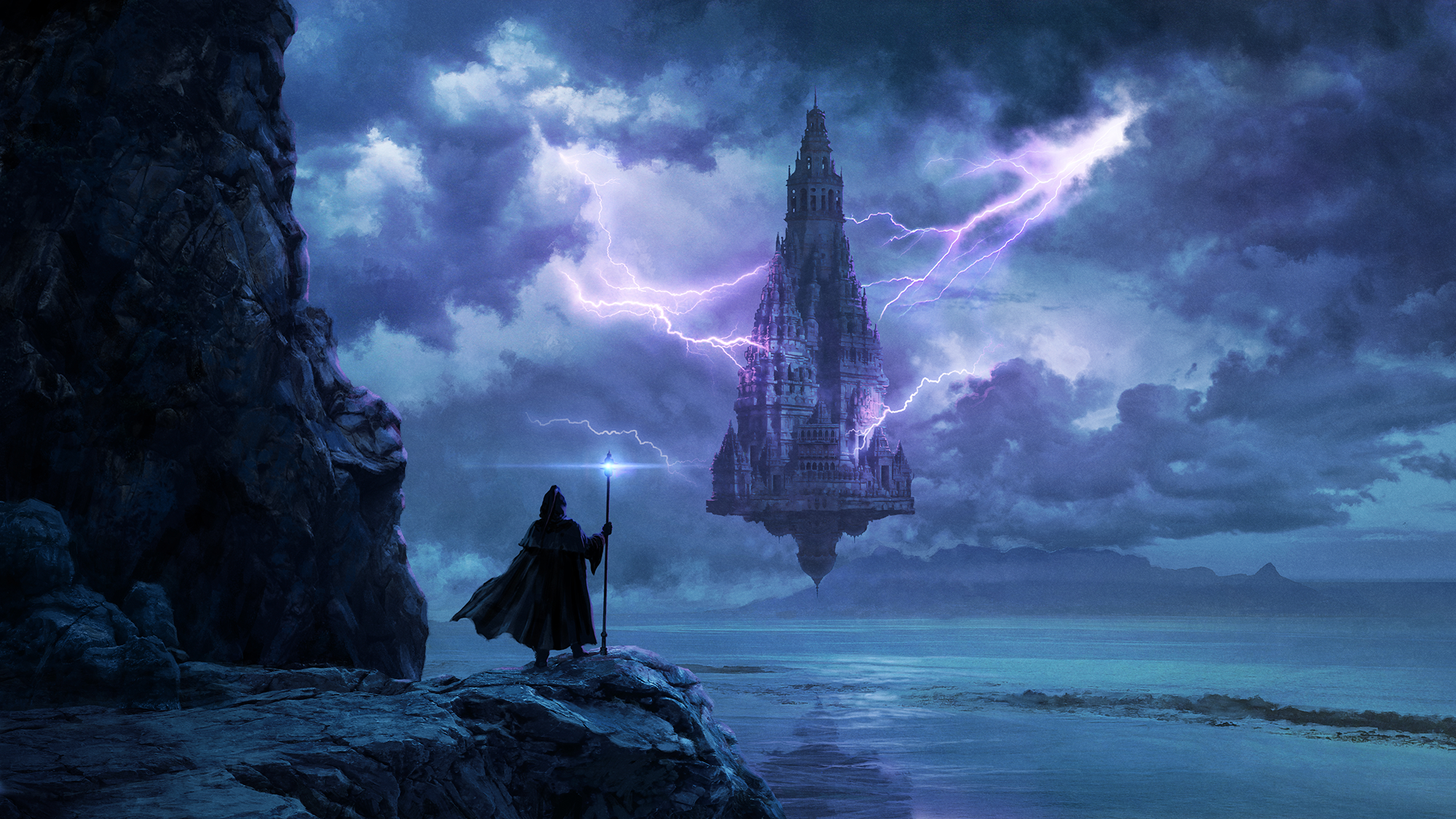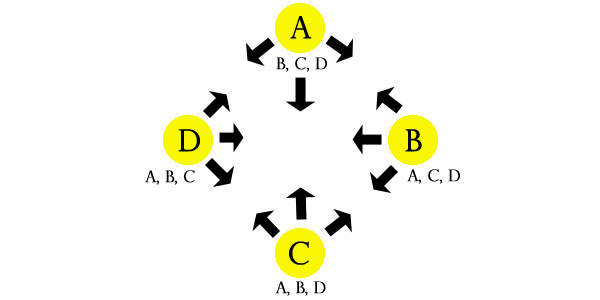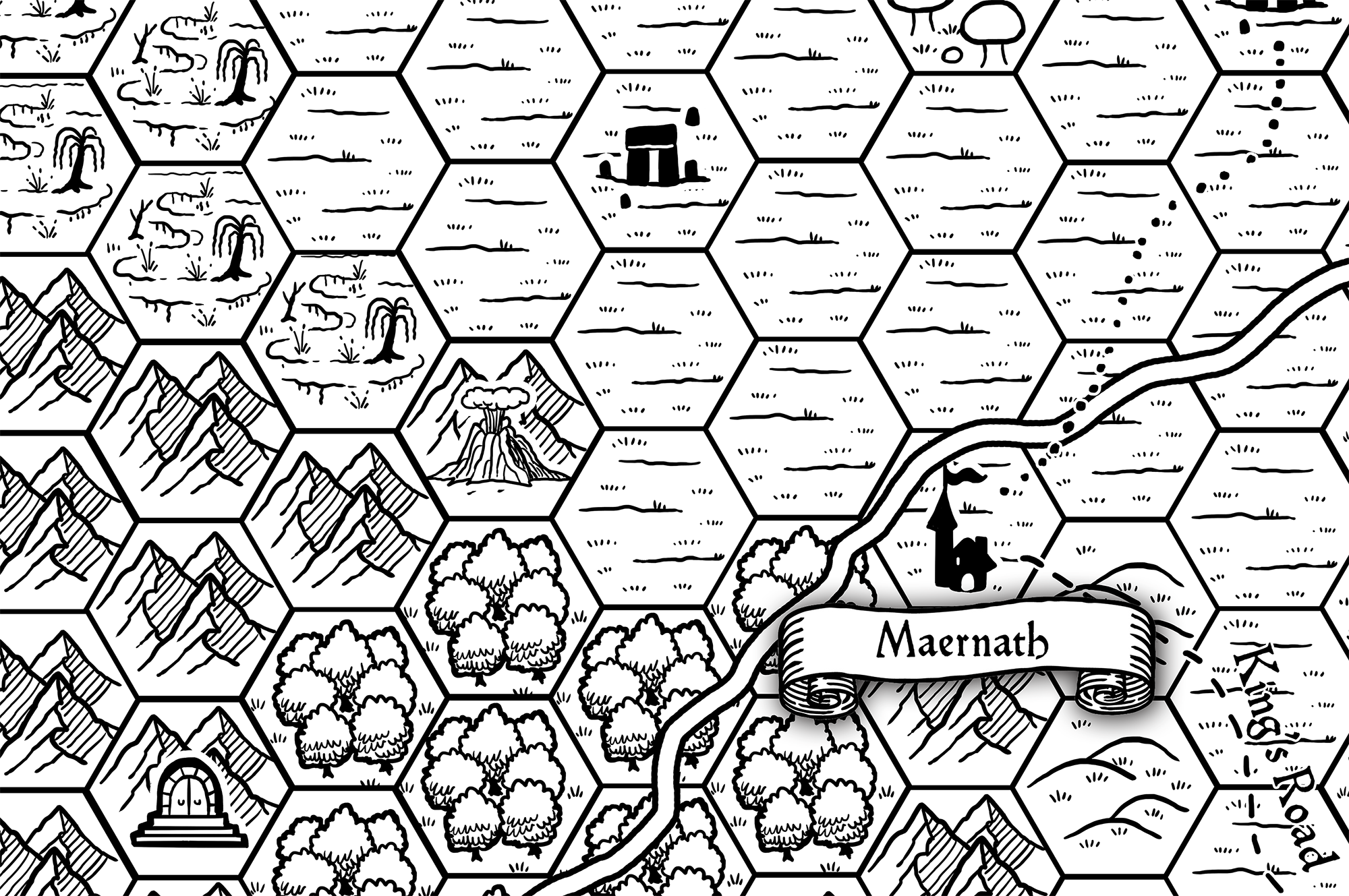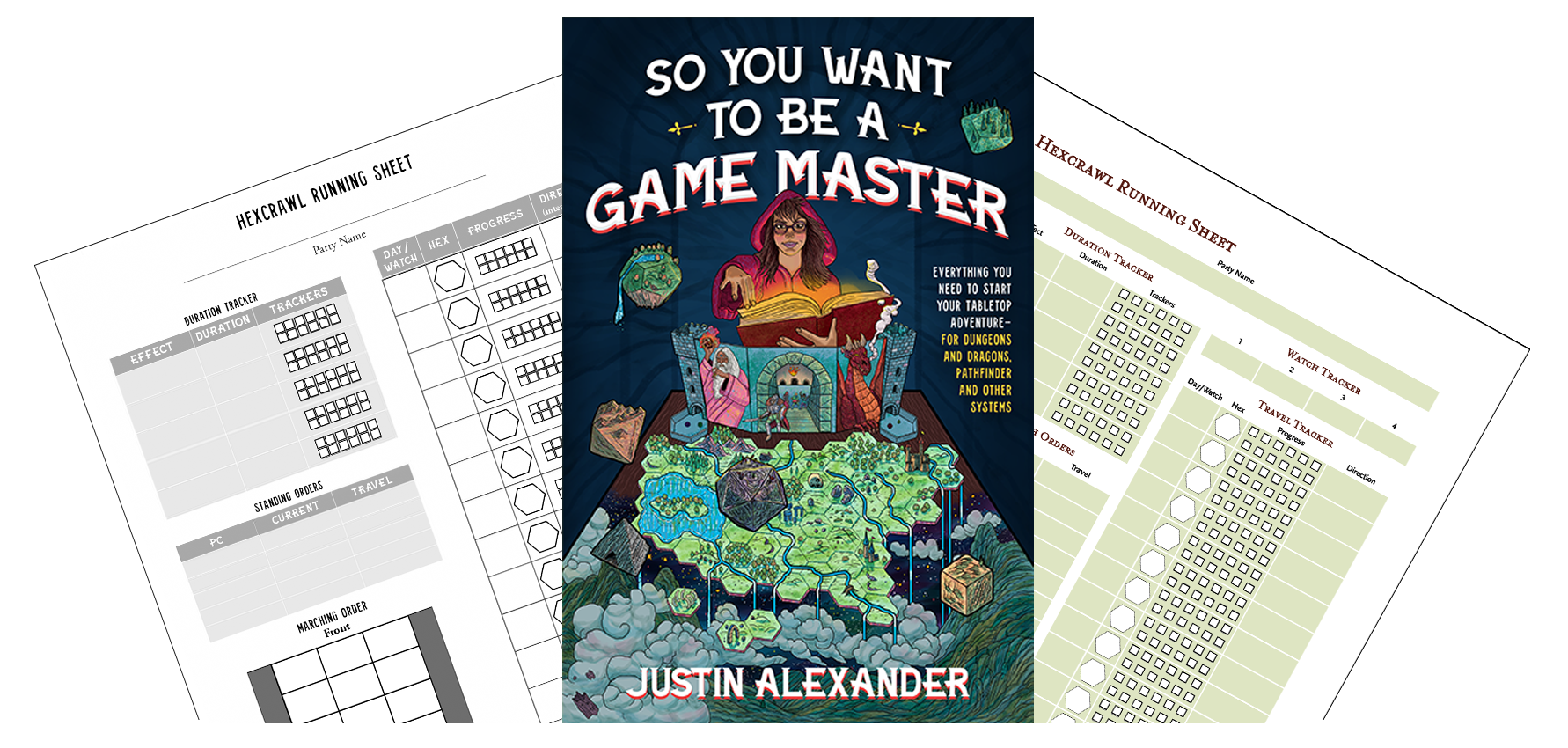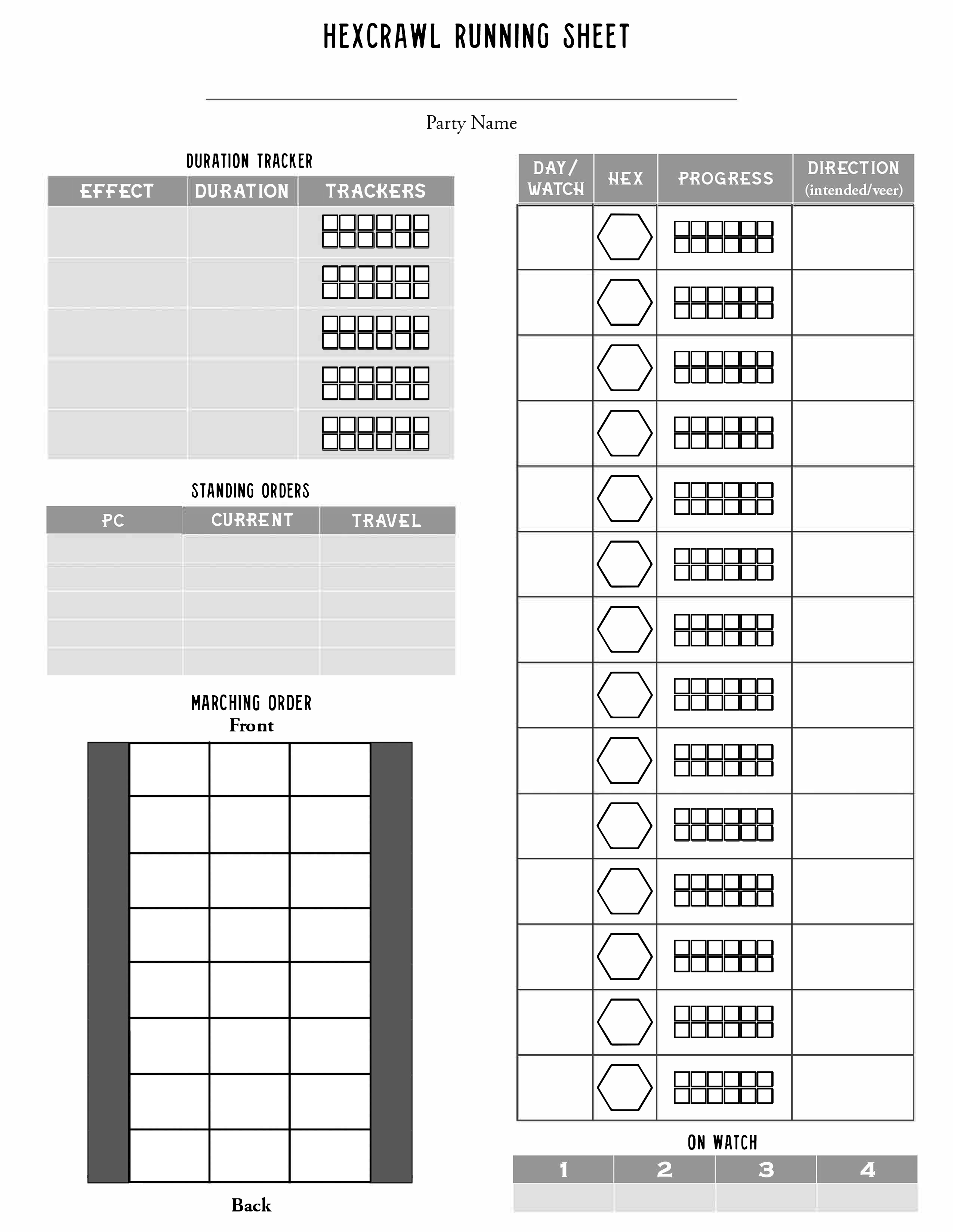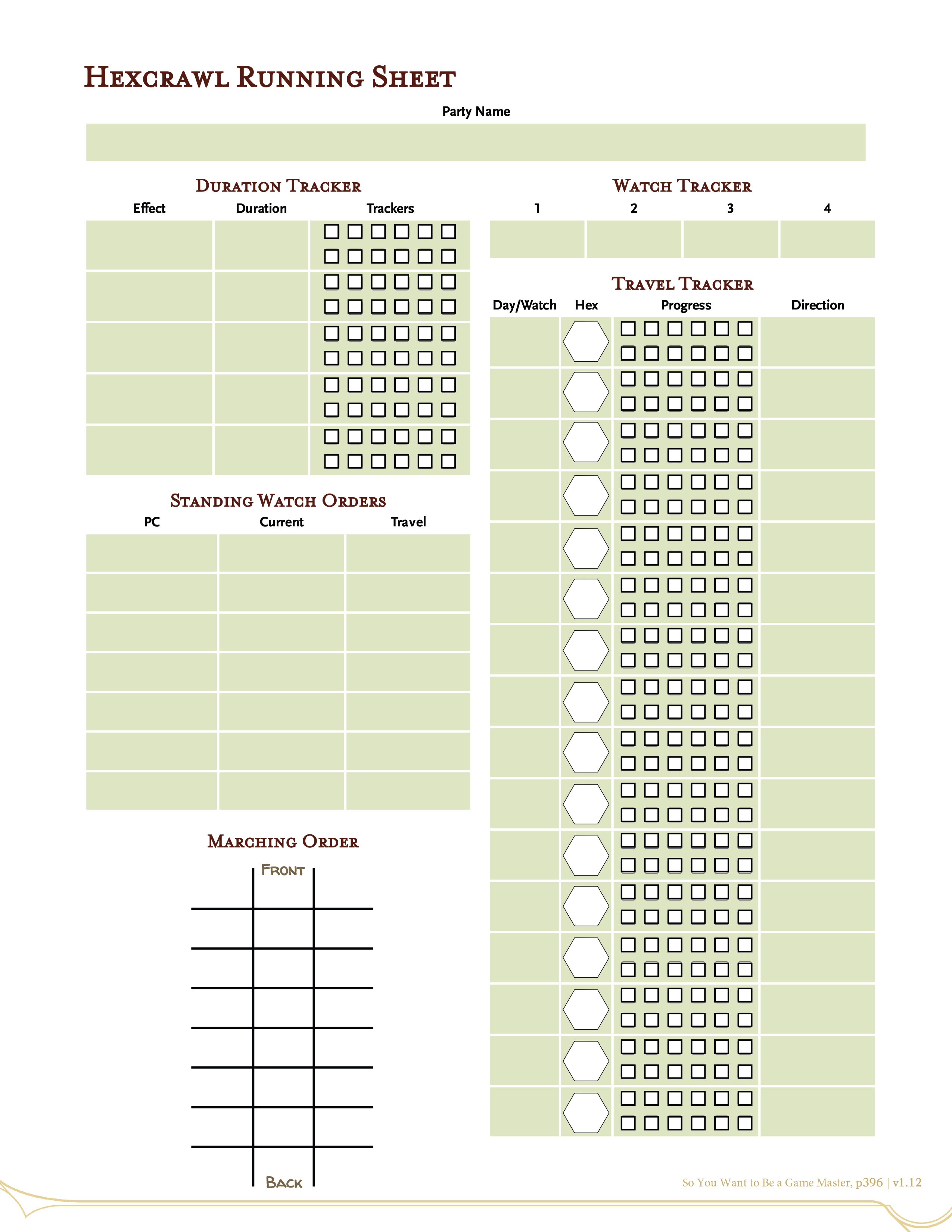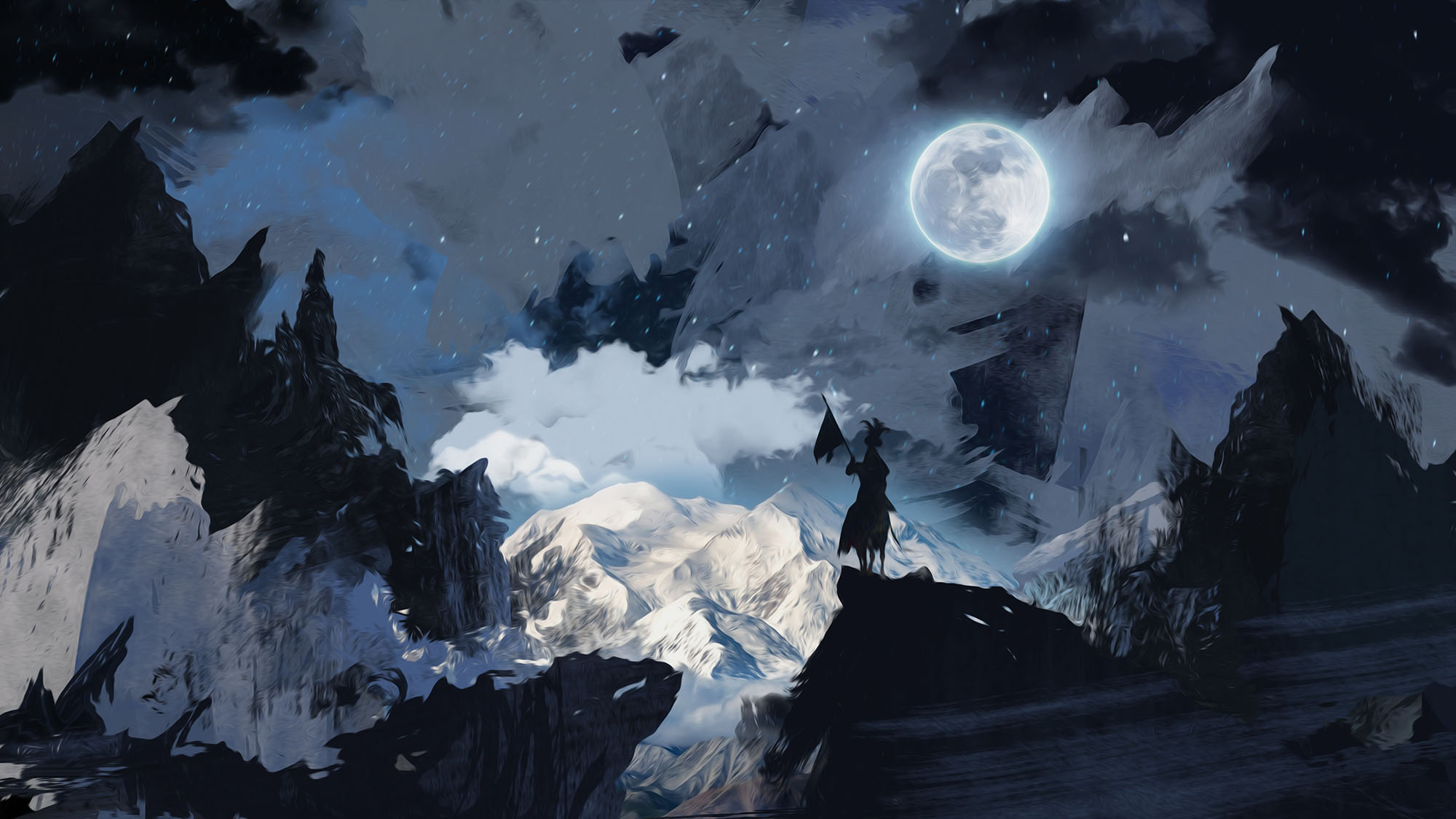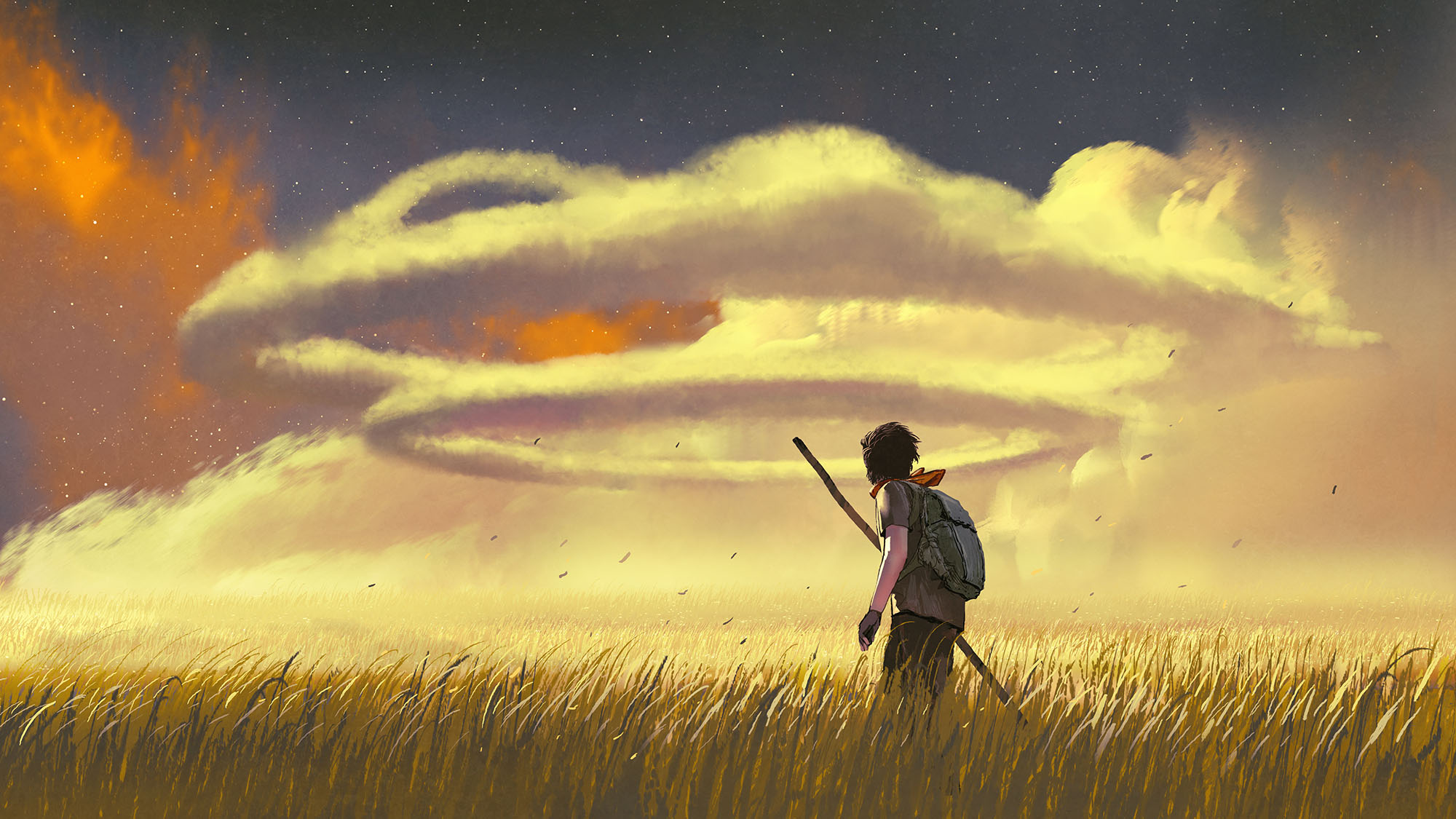
When a GM makes the transition from dungeons or scene-based play to wilderness travel, it’s not unusual for them to suddenly start struggling with describing that travel. The two most common afflictions are long-and-boring (with too much detail that’s poorly presented and neither interesting nor important) or short-and-boring (often bland, generic descriptions that fail to bring the journey to life).
What we want is to capture the epic grandeur of Tolkien’s Middle Earth; to bring our waterways to vivid life like Twain’s Mississippi; to make every corner of the world bristle with adventure like the Mediterranean Sea in Homer’s Odyssey.
But achieving these lofty aspirations can prove elusive for a couple of reasons.
First, whether we’re using hexcrawls, routes, or some other method to run our travel, these are all new procedures with new tools to learn. These can be studied, of course, but mastering them will require practice and experience, so it’s only to be expected that we’ll struggle a bit putting these into practice for the first time. “Whoops, I forgot to roll for a random encounter” and “Wait, what speed did you want to travel at?” aren’t exactly conducive to smooth, immersive descriptions.
Meanwhile, the very nature of time itself has changed.
In a dungeon, for example, pretty much everything is resolved in now time. As defined in the Art of Pacing, this is when the GM is basically describing events “as they happen” and the players are making every decision for their characters.
Wilderness travel, on the other hand, usually happens in abstract time, taking the form of eliding narration: “You wind you way through the canyons of the Opal Mesas for three days before turning south…” or “The afternoon passes quickly as you sail downstream, and as dusk approaches you can see thunderstorms on the horizon…”
At first glance, this seems quite simple. In practice, however, it unleashes a slew of new things we never had to consider before, particularly if we’re expecting the PCs to make meaningful navigational decisions along the way: How much time should be covered by our description? What events and activities can we / should we skip past entirely? What should be included in the description? When/how should the players be making decisions?
For example, how detailed should our description of the Opal Mesas be? And should it be the players’ decision to turn south after traveling three days through the Opal Mesas? Probably… unless they actually make that decision before you started the travel narration (e.g., “Okay, according to our maps we’re going to travel through the mesas and then turn south”). And, either way, what about deciding exactly which canyons to follow through the mesas? Should we be having the PCs make those decisions? Or maybe we should ask once per hex which direction they want to go?
These questions don’t necessarily have obvious answers. Worse yet, the answers will frequently CHANGE from one journey to the next. In fact, even the next time the PCs travel through the Opal Mesas you might have a completely different set of answers based on the circumstances of the trip.
Ultimately, describing travel — and doing so effectively — is more an art than a science. There is no one true way to describe the sun-kissed hills at dusk, the refreshing cool breezes that wash across your face as you head down into the Verdant Vale, or the thick cobwebs draped across the upper boughs of the Bleak Wood.
But there is a mental model that I use — a framework that helps me make sure I’m communicating clearly.
IDENTIFY THE VECTOR
First you need to identify WHAT you’re actually describing.
“Well, obviously I’m describing the journey.”
Sure. But probably not the whole thing all at once, particularly if the PCs are going to be making navigational choices along the way.
So what part of the journey are you describing right now?
I think of this as the group’s vector, but you might also think of it as a “segment” (of the journey) or a “container” (that you’re going to be filling up with your description). In short, look at where the PCs currently are and their intended/actual direction of travel. Looking along that line, you want to figure out where the next interruption will take place. That will give you the endpoint of the group’s current vector, and then you’ll know exactly what chunk of travel you need to describe.
Another way of thinking about the interruption is that it’s the next point along the vector where the players either will or might want to make a meaningful choice. Interruptions can be many different things:
- Terrain. A change in terrain — e.g., arriving at the forest; entering the Mire of Despair; emerging from the Opal Mesas — provides new navigational information to the players, which makes it likely, particularly if this is their first time exploring this region, that they’ll want to stop, try to figure out where they are, and possibly choose to head in a new direction.
- Landmark. Similarly, spotting a landmark is often a point where the PCs will need to make a choice — e.g., You see a castle off to the west. (Do they want to go check it out?)
- Destination. If the PCs are heading to a specific location, then obviously their journey will end when they reach it.
- Getting Lost. Or, more accurately, the point where the PCs realize that they’re lost. They’ll obviously want to stop, try to get their bearings, and then make a new navigational choice.
- Random Encounter. In most cases, when a random encounter is generated, you’ll want to give the players a chance to react to and/or interact with whatever the encounter is.
- End of Watch. Since the PCs need to choose which watch actions they’re going to perform during each watch, you’ll naturally want to stop at the end of each watch so that they can declare those actions… except this is a trap. The choice of a new watch action is often not meaningful at all, because it’s overwhelmingly likely that, for example, the navigator will continue being the navigator. This is why you want to instead establish standing orders for the expedition: It extends the vector so that you can’t get stuck in a long-and-boring cycle of minutia.
- End of Day. Another natural and regular endpoint is the end of the day. Although there are situations in which a vector will end up being longer than a single day, it’s a good default to aim for when in doubt or just getting started. A full day of travel will give you a nice chunk of resolution; settling in around the campfire each night is a logical place for the PCs to compare notes, do some bookkeeping, and prep for the new day; and if something like a random encounter interrupts the day, it’s easy to spot that and then set up another vector aiming for sunset.
Some of these interruptions, like a random encounter, will basically demand the vector’s end. Others can be more situational, and you’ll need to get in sync with your group: Are they in nitty-gritty exploration in an area with lots of new landmarks and terrain? Then you might have a lot of very short vectors. On the other hand, are they traveling a well-known route? Then you probably don’t have to stop when they leave the Emerald Wood — both you and them know where they’re going!
VECTOR PROCEDURE
So, to be clear, what you’re doing is:
- Identifying the group’s intentions (i.e., their travel plans).
- Resolving your hexcrawl procedure…
- … until you reach an interruption.
And that’s the vector you’re going to describe.
The travel plan might simply be the intended direction of travel and travel pace, in which case the vector is quite literal (it’s a line pointing in that direction). However, in some cases, particularly if they’re traveling a familiar route, the players will declare a more complicated intention — e.g., “We’ll travel through the Emerald Wood, then turn southwest when we hit the Ochre Grasslands on the other side.” Assuming nothing else interrupts their intention, you can continue resolving your hexcrawl procedure through that predetermined navigational choice until you reach a meaningful interruption and identify the true end of the current segment.
In practice, I often look ahead and figure out what the end of the vector will be if everything goes “right” for the PCs. This lets me identify a “chunk” of travel that’s going to be fed through the hexcrawl procedure, which — with a little bit of mastery and experience — lets me batch up some tasks (i.e., making multiple random encounter checks in a single roll) resolve things more quickly and efficiently.
Resolving the chunk, of course, may reveal an additional interruption (e.g., the random encounter(s) I rolled), in which case the vector will end sooner. Which is, of course, just fine. Jot down a note of any pending resolutions (i.e., future random encounters), which also conveniently give you a head start when the next vector kicks off.
DESCRIBING THE VECTOR
With your vector in hand (which, in practice, will be a much quicker process than the detailed discussion above might lead you to believe), it’s now time to describe that vector to your players.
The foundation of your description is Terrain + Distance + Time.
Distance and time are easy: You know where the vector started and you know where it ends. Your travel rules will tell you how long it took to get from one point to the other.
For complex vector, you may also want to make a note — mental or otherwise — of the timing for milestones along the way (e.g., they reach the Emerald Forest after three hours and they arrive at the Atharan River after seven). These will help you sequence and provide a light structure for your description.
Terrain is, of course, sourced from your hexmap. Hexcrawl Tools: Spotting Distances provides a detailed breakdown for this, but here are the key points I’m usually thinking about:
- The PCs can see the terrain in their current hex.
- In relatively open terrains (e.g., plains) you might mention the terrain of neighboring hexes on the horizon. (This will be particularly true if the PCs are biased in the hex.)
- Heights can often let the PCs see a lot farther, although it’s usually unreliable. (Being high in the mountains, for example, can let you see a long way… or it can completely block your line of sight.) There are rules for seeking a vantage point that cover this, but as a rule of thumb you might once per day describe terrain and landmarks in hexes made visible by the heights.
In practice, this foundation covers most of what you need to describe:
Crossing through the tall, amber-colored grasses of the plains you reach the Emerald Forest in about three hours. You travel through the forest for the rest of the day and, near nightfall, you hear the roaring rapids of the Atharan River ahead.
But there are two other elements you’ll want to use to flesh out your descriptions: Landmarks and Unkeyed Details.
Landmarks are locations visible to anyone passing through a hex. Some landmarks, including mountains, will be visible from multiple hexes away (and you should make sure these are indicated on your hexmap for easy reference).
Some landmarks may function as interruptions that end the vector, but others will just be additional milestones for the journey.
Tip: An advanced technique here is to mention a landmark (e.g., “Around mid-afternoon you spot the ruins of an old castle on top of a tall hill a couple miles off to your left”) and then pause for just a beat. Not so long as to become expectant, but just a subtle break that gives players the space to say, “Let’s go check it out!” before you continue describing their journey forward.
Figuring out which landmarks should be interruptions, which ones you should give space for a reaction, and which are best just describe in passing (probably because the PCs have already come this way before and are expecting to pass the castle ruins) is something you’ll get a feel for.
When in doubt, it rarely hurts to just ask, “Do you want to check out the castle or keep heading east?” But, in my opinion, you don’t want your players to think that you’re pushing the castle on them. It’s more fun when they feel in control of their exploration.
Unkeyed Details are all the things in your game world that don’t appear in your prep notes: You don’t key the trees. Or the streams. Or every minor details of the terrain.
The key thing to understand here is that if we interpreted a hex in our hexcrawl as if it only contained the keyed point of interest, then it would be a vast howling emptiness. Think about everything interesting within six miles of where you’re reading this. Imagine a GM picking out the single most interesting thing in that area and adding it to their key. Now imagine that same GM describing a group of PCs traveling through the area. See how much stuff they’d miss if they only described what was in their key?
In short, your hexmap doesn’t include every road or river. Hexcrawls are often located out on unexplored frontiers, but if you have a hex keyed as farmland, the unkeyed scenery could even include passing by two or three small villages per hex. (This would obviously vary by locale, but in both medieval France and Qing Dynasty China, the villages were three to four miles apart.)
So what you want to do is add a light spicing of this unkeyed scenery into your descriptions: Describe them splashing through a small stream. Or following an old game trail that leads them down into the river valley.
It might be useful to think of these details as breathing life into a generic terrain symbol. It’s certainly these little details that will make your game world feel like a real and living place to your players.
Note that you don’t need to remember all these details: They’re unimportant by their very nature. Next time you might instead describe a glade dappled by sunlight that the PCs pass through on their way to the Atharan River instead of a game trail, and that’s just fine. You don’t need to memorize these fleeting moments any more than you need to memorize every stitch in your favorite quilt.
(The exception is when an unkeyed detail becomes important because the PCs choose to focus their attention on it. When that happens, just add it to your key. For example, they might say something like, “Let’s find that old game trail we followed last time!” Or they might decide to stop in one of the nondescript villages they’ve been passing along the road and rent a room at the local inn… where one of the PCs ends up falling in love with the innkeeper’s handsome son. They eventually end up getting married, the PC inherits the inn, and then their husband is tragically killed in an orc attack. Yeah… You should probably add that to your notes.)
Unkeyed details can also include minor travel activities: Stopping for a meal. Checking the map. The ranger finding that game trail. These are great because they protagonize the PCs and makes them a concrete part of the journey. You can take cues from the groups’ watch actions and make sure to spread the spotlight around. (Not every PC needs to be described as doing something in every vector, but over the course of several vectors everybody should get a turn.)
So, to sum this all up: Set your foundation with terrain + distance + time. Identify the landmarks the PCs will pass along the way and place them in sequence. Then lightly spice with evocative details to taste.
As you cross through the tall, amber-colored grasses of the plains, the Monterrat Peaks to the north parallel your journey. After about three hours, you reach the Emerald Forest. For the rest of the day, the cool shade of the boughs is a blessed relief from the sun’s heat. Near nightfall, as you head down in to the river valley, the pleasant birdsong of the forest is replaced by the roaring rapids of the Atharan River.
FRAME THE ENDPOINT
There’s a reason why the vector came to an end: A navigational choice. A random encounter. A location.
That interruption is a scene!
The players need to make a choice, so use the principles from the Art of Pacing to frame up the scene where they make that choice. In some cases, that scene will be quite short:
GM: You’ve reached the Atharan River.
Navigator: Okay. We’ll turn left and follow the river south until we see the Eld King’s statue.
At which point you’ll be able to rapidly pivot into identifying the next travel vector and describing it.
In other cases, you’ll instead be transitioning to a lengthier scene or even a full adventure before the PCs continue their journey. Either way, the important thing, as you bring your description to a close, is to clearly frame up the scene: Why are you stopping? What choice are you expecting the PCs to make? Make the stakes as clear as you can and make your bang as powerful as possible.
When in doubt, though, this can boil down to a simple question: You’ve reached [WHERE YOU ARE]… now what?
GM: You’ve reached the Atharan River… Where do you want to go now?
Navigator: We’ll turn left and follow the river south.
And away you go!
Back to Hexcrawls

